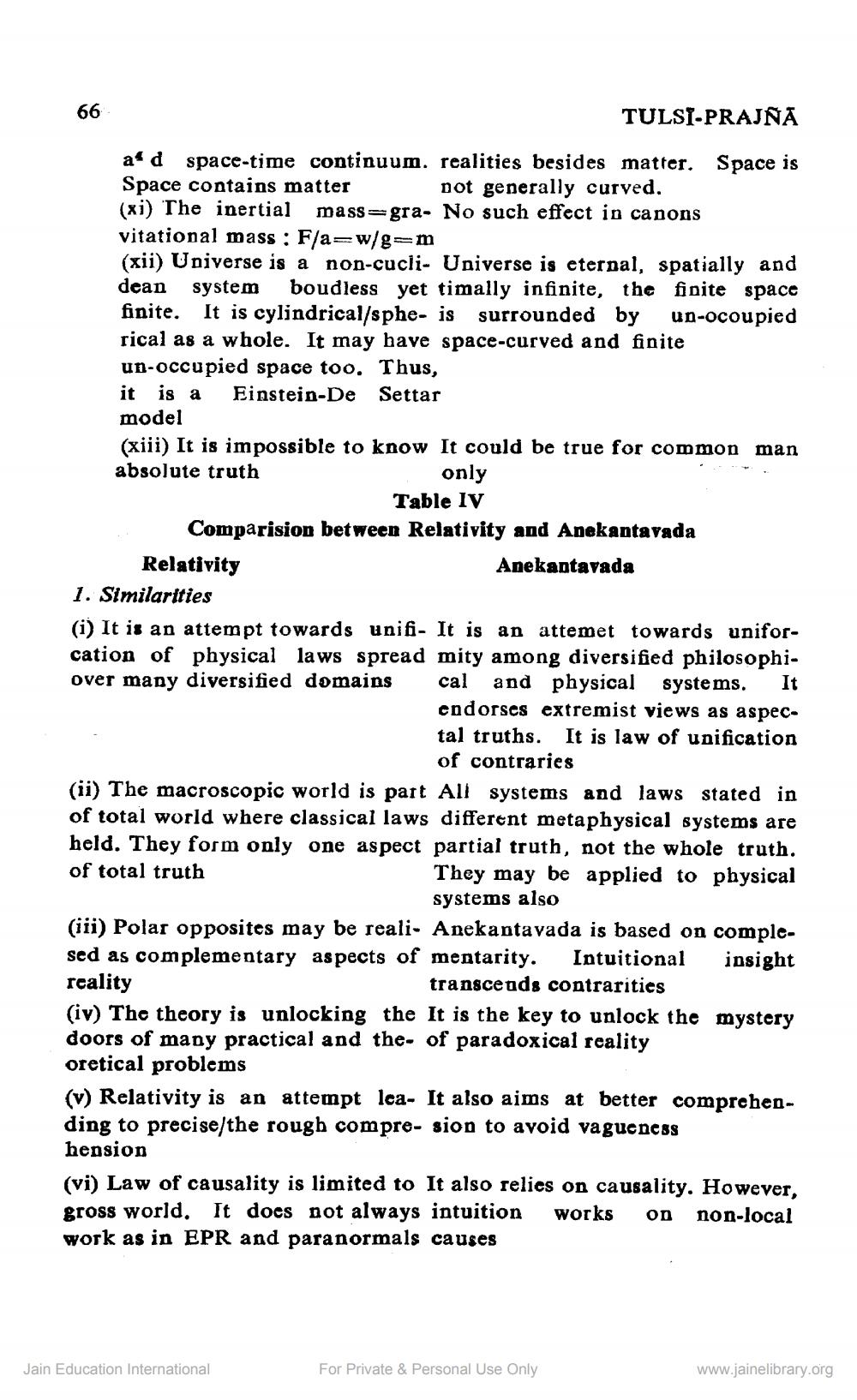________________
66
ad space-time continuum. realities besides matter. Space is Space contains matter not generally curved. (xi) The inertial mass gra- No such effect in canons vitational mass: F/a-w/g=m
dean
(xii) Universe is a non-cucli- Universe is eternal, spatially and system boudless yet timally infinite, the finite space finite. It is cylindrical/sphe- is surrounded by un-ocoupied rical as a whole. It may have space-curved and finite
un-occupied space too. Thus,
it is a
Einstein-De Settar
model
(xiii) It is impossible to know It could be true for common man absolute truth
only
Table IV
Comparision between Relativity and Anekantavada
Anekantavada
Relativity
TULSI-PRAJNA
1. Similarities
(i) It is an attempt towards unifi- It is an attemet towards uniforcation of physical laws spread mity among diversified philosophiover many diversified domains
cal and physical systems. It endorses extremist views as aspectal truths. It is law of unification of contraries
(ii) The macroscopic world is part All systems and laws stated in of total world where classical laws different metaphysical systems are held. They form only one aspect partial truth, not the whole truth. of total truth They may be applied to physical systems also
(iii) Polar opposites may be reali- Anekantavada is based on complesed as complementary aspects of mentarity. Intuitional insight transcends contrarities
reality
(iv) The theory is unlocking the It is the key to unlock the mystery doors of many practical and the- of paradoxical reality
oretical problems
(v) Relativity is an attempt lea- It also aims at better comprehending to precise/the rough compre- sion to avoid vagueness
hension
(vi) Law of causality is limited to It also relies on causality. However, gross world. It does not always intuition
works on non-local
work as in EPR and paranormals causes
Jain Education International
For Private & Personal Use Only
www.jainelibrary.org




